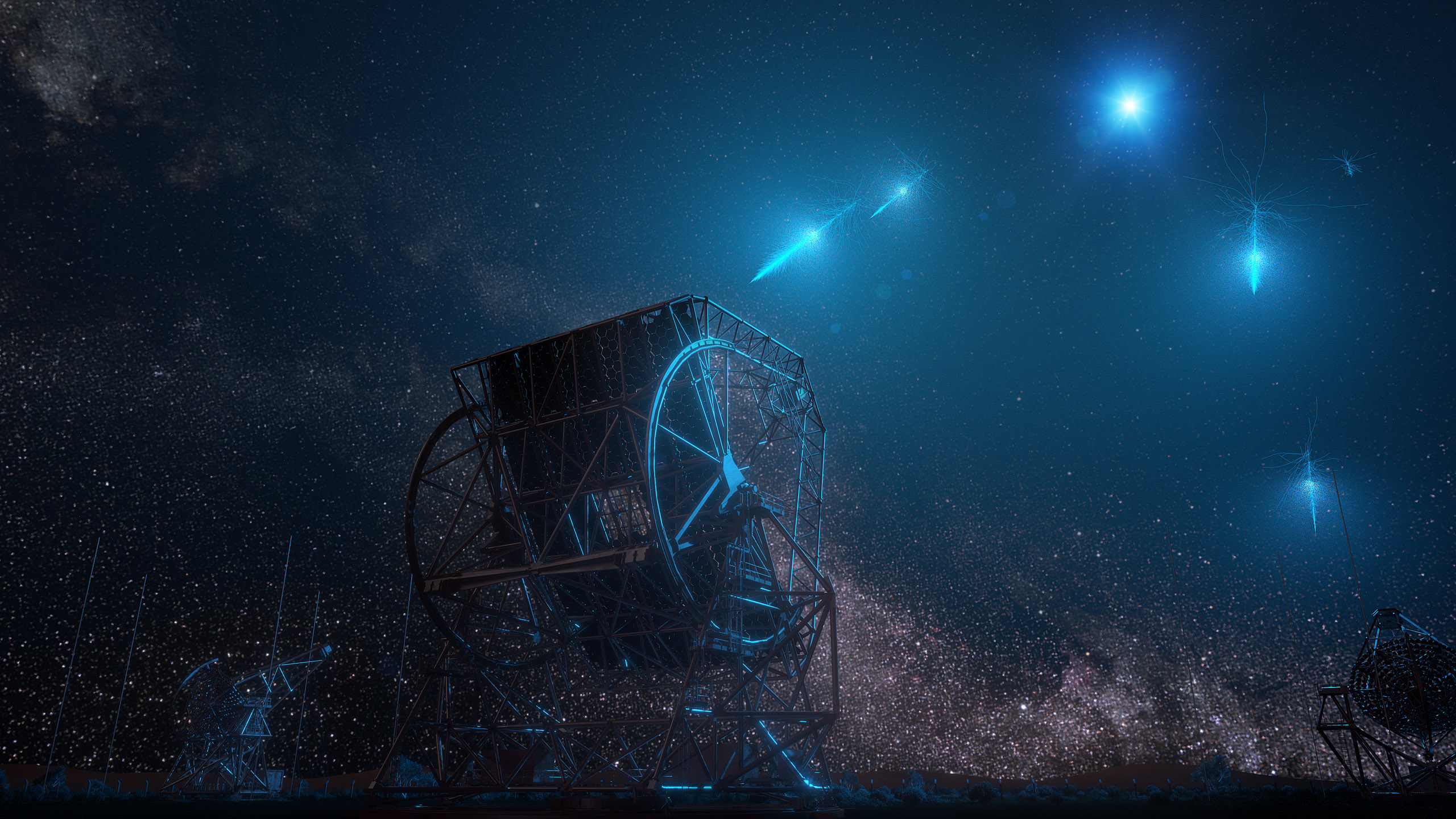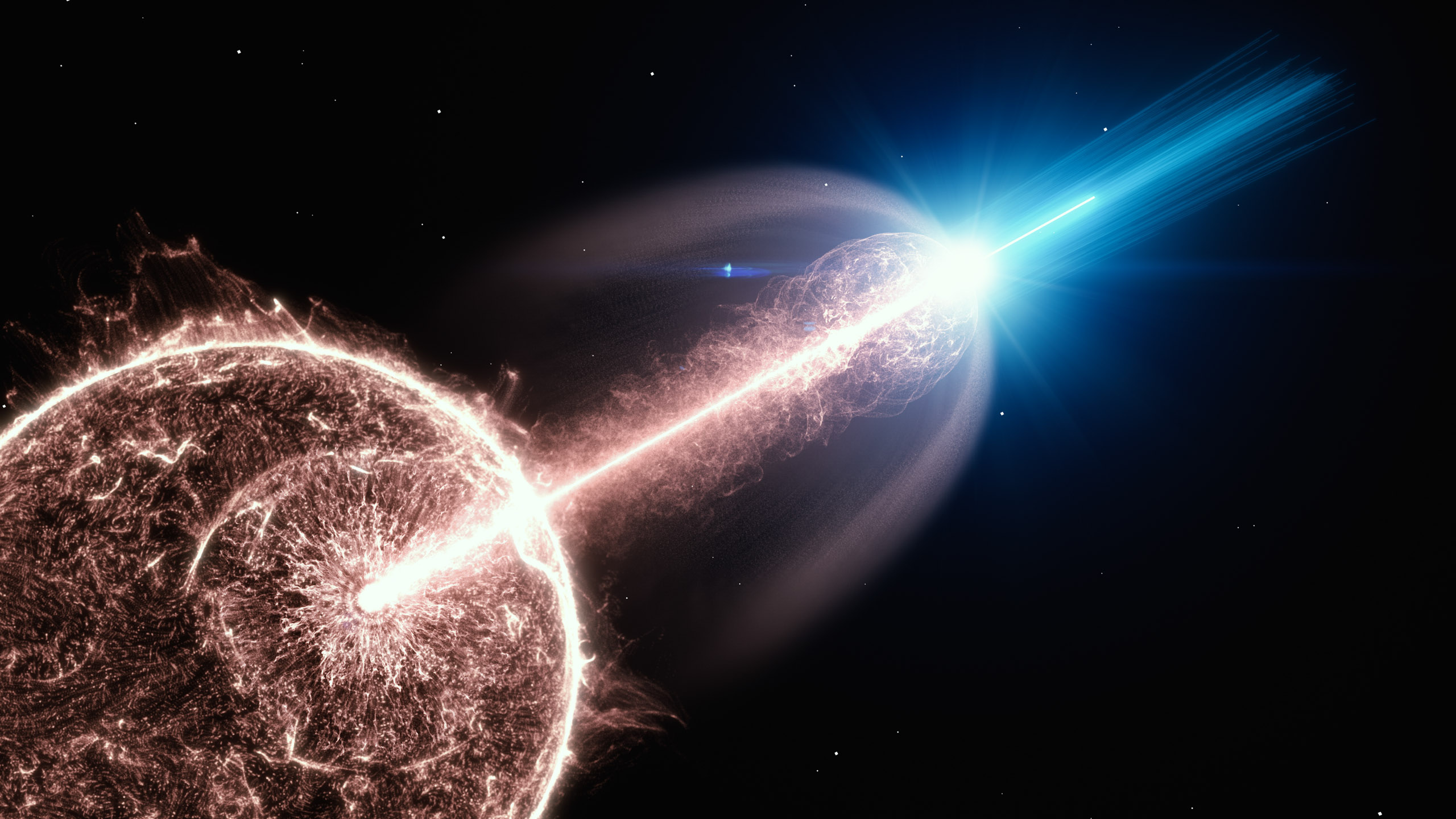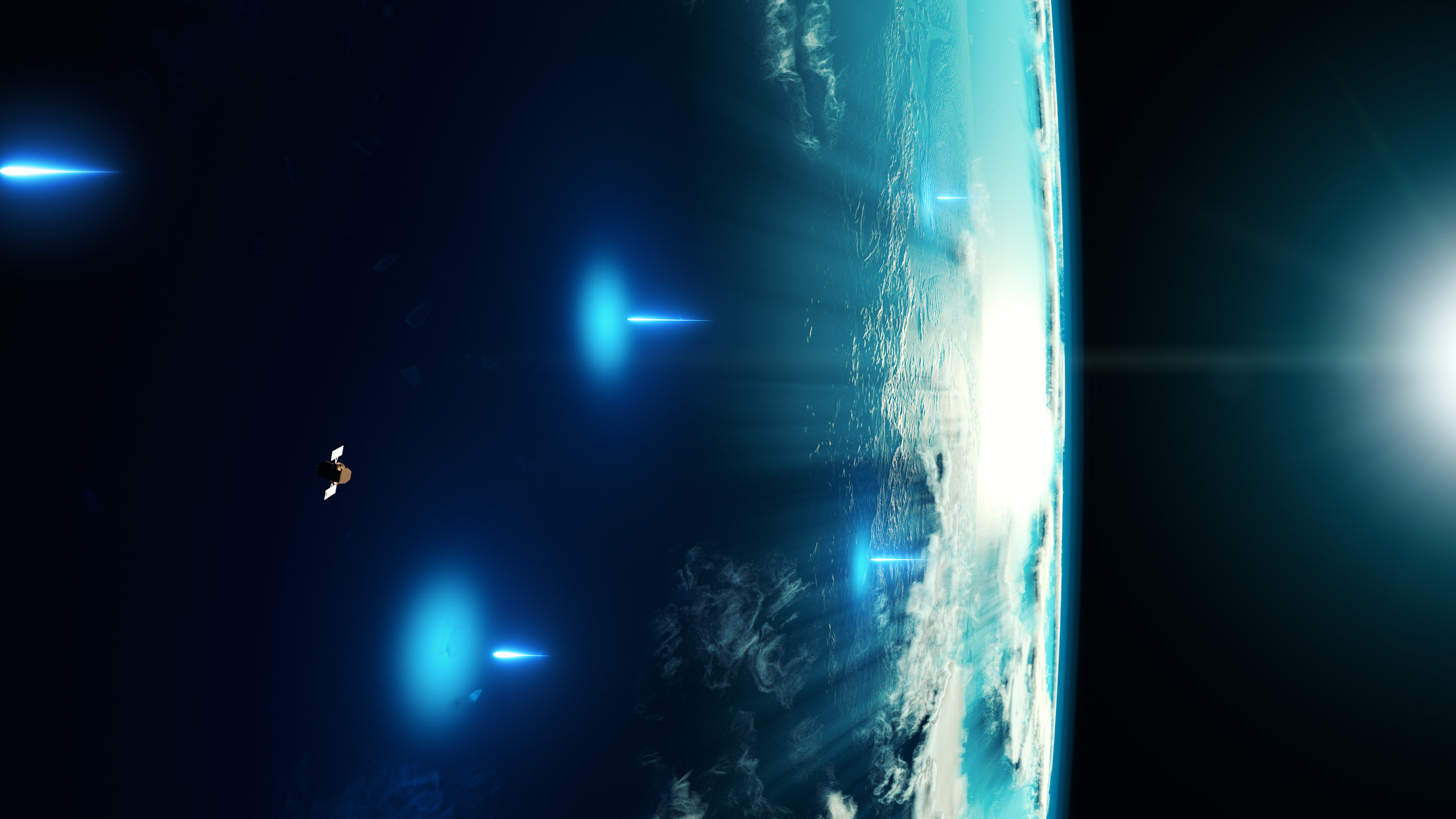Gamma Ray Burst
CLIENT
Deutsches Elektronen-Synchrotron DESY
RESEARCH FIELD
TYPE
Animation
YEAR
2021
DESCRIPTION
This film illustrates the event, catalogued as GRB 190829A according to its date of occurrence, which turned out to be one of the nearest gamma-ray bursts observed so far, with a distance of about one billion lightyears.
Somewhere in a distant galaxy, a massive dying star collapses and a neutron star or black hole forms. Relativistic jets break out of the collapsing star, and a supernova is produced. The jet ploughs through the surrounding gas sweeping up particles. Some particles scatter on magnetic fields around the blast wave and are accelerated. The accelerated electrons emit high energy photons in the X-ray and gamma-ray regime at every deflection. This emission is called synchrotron radiation. Relativistic beaming occurs in the jet direction. When looking exactly down a jet, the event becomes visible as a gamma-ray burst (GRB).
Roughly 900 million years later, radiation from this gamma-ray burst arrives at Earth and is detected by satellites and telescopes as GRB 190829A. High-energy photons hitting Earth's atmosphere produce particle showers that emit so-called Cherenkov light for a couple of nanoseconds. This glow can be detected by telescopes such as H.E.S.S. This way, H.E.S.S. could follow GRB 190829A for three nights in a row in unprecedented detail.



More projects